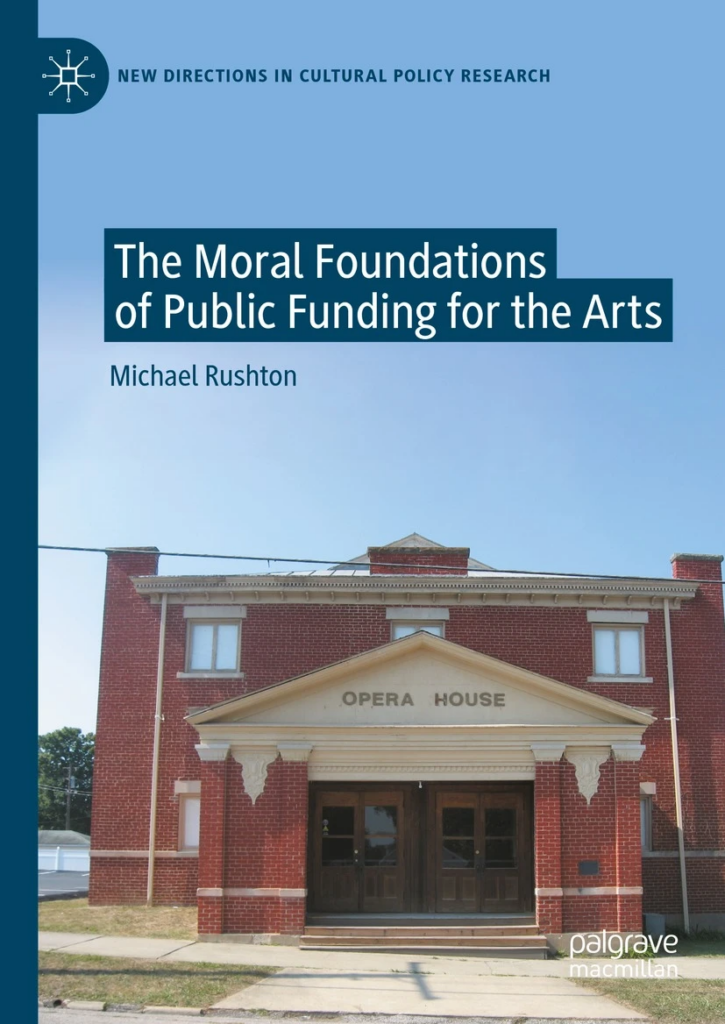
One week from today, Wednesday October 18, at noon eastern time, my colleague Dr. Joanna Woronkowicz will be interviewing me, and taking questions, on my recently published book, as part of the Center for Cultural Affairs workshop series (we meet every two weeks via Zoom, for the latest in arts management and policy research). It’s free to register – please join us!
UPDATE: Here is the video – I really enjoyed the discussion

I have only read chapters 1 and 2 of your new book. Really clear and pleasant to read. Thank you! As an economist, I admit that I didn’t really know the moral implications you point out for the economic method presented in Chapter 2 — thanks for educating me! I just have one comment at the very end of chapter 2. You quote David Throsby who distinguishes “cultural value” from “economic value”. After reading chapter 1 of Grampp’s book (1989), I tend to believe that “economic value” (which should not be confused with price or pecuniary or financial or commercial value, etc.) includes “cultural value”, “economic value” being the general form of all value according to Grampp (who explains that something has economic value if it produces utility (in the economic sense) for someone). When I look at the Château de Chambord, the utility I derive from it — therefore its economic value for me — can also include the “aesthetic properties” of the château, its “historical importance”, its “authenticity”, its ” uniqueness”, etc. Everything is encompassed in this economic value. Am I wrong?
I will now try to read the following chapters.
Yann
Thank you for reading the book – I hope you enjoy the rest. I recommend the cited Throsby article, in which, I believe, he wants to say that however much personal value I might place on a work of art, on its many facets, there is still something beyond the value placed on it by the sum of all individuals. This is his worry about relying on contingent valuation methods